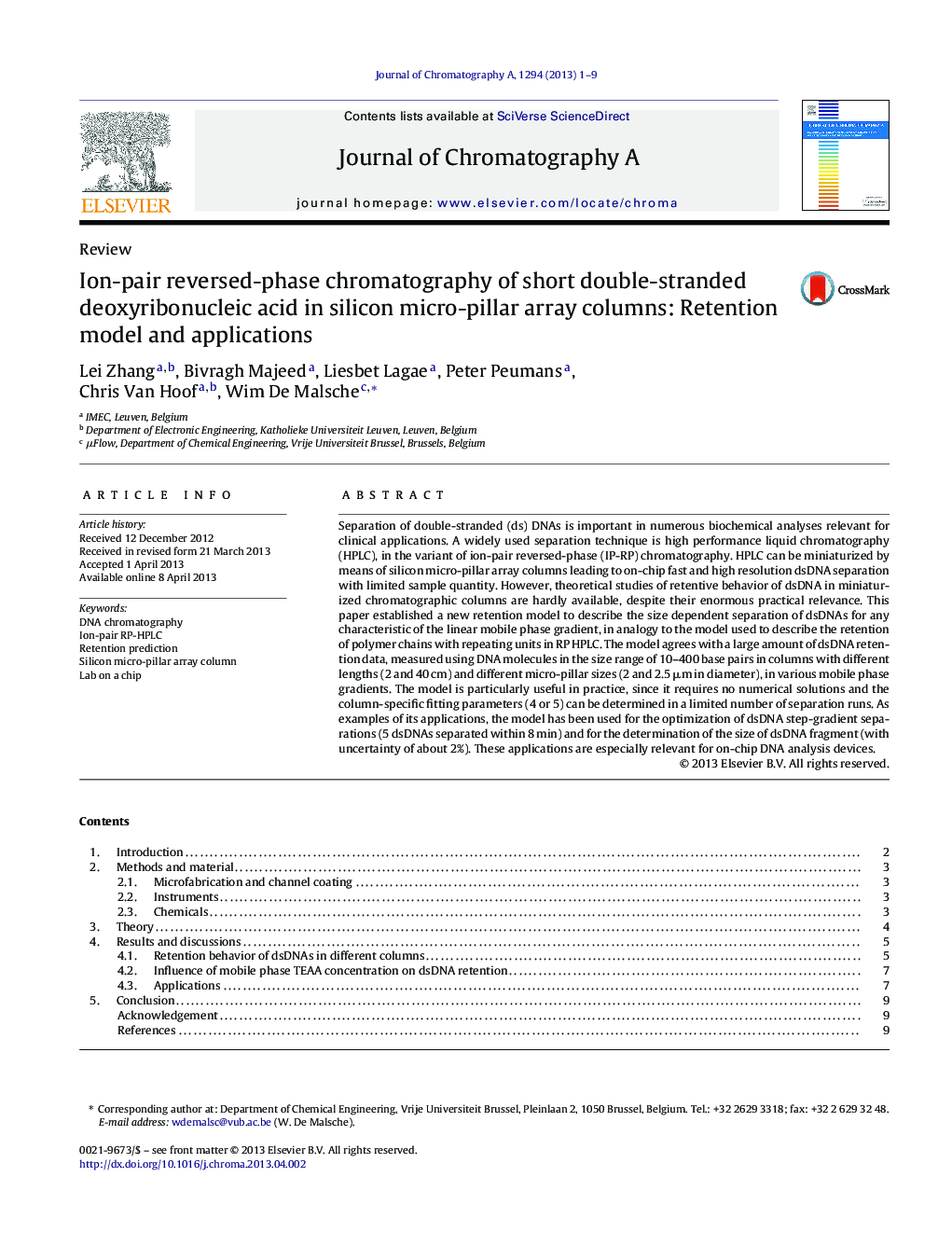| کد مقاله | کد نشریه | سال انتشار | مقاله انگلیسی | نسخه تمام متن |
|---|---|---|---|---|
| 1201003 | 1493632 | 2013 | 9 صفحه PDF | دانلود رایگان |

• dsDNA chromatography is successfully performed on silicon micro-pillar array columns.
• A length-based model describes dsDNA retention in linear gradients.
• The model is used to optimize dsDNA separation and to determine dsDNA size.
Separation of double-stranded (ds) DNAs is important in numerous biochemical analyses relevant for clinical applications. A widely used separation technique is high performance liquid chromatography (HPLC), in the variant of ion-pair reversed-phase (IP-RP) chromatography. HPLC can be miniaturized by means of silicon micro-pillar array columns leading to on-chip fast and high resolution dsDNA separation with limited sample quantity. However, theoretical studies of retentive behavior of dsDNA in miniaturized chromatographic columns are hardly available, despite their enormous practical relevance. This paper established a new retention model to describe the size dependent separation of dsDNAs for any characteristic of the linear mobile phase gradient, in analogy to the model used to describe the retention of polymer chains with repeating units in RP HPLC. The model agrees with a large amount of dsDNA retention data, measured using DNA molecules in the size range of 10–400 base pairs in columns with different lengths (2 and 40 cm) and different micro-pillar sizes (2 and 2.5 μm in diameter), in various mobile phase gradients. The model is particularly useful in practice, since it requires no numerical solutions and the column-specific fitting parameters (4 or 5) can be determined in a limited number of separation runs. As examples of its applications, the model has been used for the optimization of dsDNA step-gradient separations (5 dsDNAs separated within 8 min) and for the determination of the size of dsDNA fragment (with uncertainty of about 2%). These applications are especially relevant for on-chip DNA analysis devices.
Journal: Journal of Chromatography A - Volume 1294, 14 June 2013, Pages 1–9